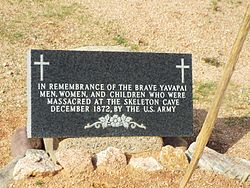Imagine the uproar if some pro team in the USA were to be named the BLACKskins.........but the REDskins have tons of Blacks playing for them..................then they complain about racism.................but yet are racist........judging by the umpteen times I have been called cracker here in the DC homeless shelters...................................so u must think it is ok..........you only care about something when it directly concerns u........just like most people.........women, latinos, whites, etc.....which is why I call you hypocrites...........b/c u are........
Would you even play for a team named the WHITEskins...........the BLACKskins or the BROWNskins.............??????? I doubt it.............then why the FUCK do u play for a team named the REDskins.........???????? As you people are too much of cowards to answer for yourselves..........and act like spoiled brats................I guess I have to answer for you...................................YOU ARE HYPOCRITES.............
To the players of the Washington REDskins............since u do not see a problem with playing for a team named REDskins...............ask that they change the name..........to the WHITEskins........the BLACKskins..............the BROWNskins............etc..............and then play for them....
The same with the fans.......................ask them to change the name.........I want to see your balls then.......
Terrance......a Black man at Some's cafeteria...............................says every man should have a REDskin shirt........................change the name to Blackskins..........and then route for them.......I want to see his balls then..........
In the history of the European colonization of North America, an atrocity termed "Indian massacre" is a specific incident wherein a group of people (military, mob or other) deliberately kill a significant number of relatively defenseless or innocent people—usually civilian noncombatants or to the summary execution of prisoners-of-war.[citation needed] The term refers to the killings of Euro-Americans by Native Americans (Indians) as well as to killings of Native Americans by Euro-Americans and/or by other Native Americans.[citation needed]
Would you even play for a team named the WHITEskins...........the BLACKskins or the BROWNskins.............??????? I doubt it.............then why the FUCK do u play for a team named the REDskins.........???????? As you people are too much of cowards to answer for yourselves..........and act like spoiled brats................I guess I have to answer for you...................................YOU ARE HYPOCRITES.............
To the players of the Washington REDskins............since u do not see a problem with playing for a team named REDskins...............ask that they change the name..........to the WHITEskins........the BLACKskins..............the BROWNskins............etc..............and then play for them....
The same with the fans.......................ask them to change the name.........I want to see your balls then.......
Terrance......a Black man at Some's cafeteria...............................says every man should have a REDskin shirt........................change the name to Blackskins..........and then route for them.......I want to see his balls then..........

Comments
Post a Comment